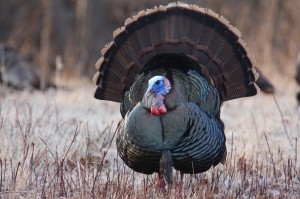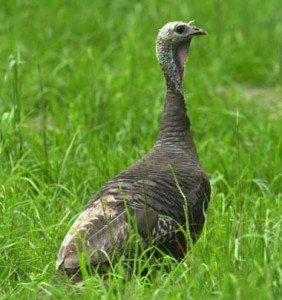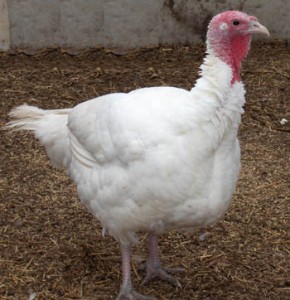Welcome to “Beak of the Week!”
Find the new ‘Beak of the Week’ on The Birding Bug Blog EVERY MONDAY! We thought this would be a great way for all of us to learn more about a different species of bird each week. Danielle and I look forward to taking a deeper look at our fascinating feathered friends and sharing our findings. We hope that you, too, will join in the fun and impart your knowledge as well! Thoughts, sightings, questions, corrections and additional facts are ALWAYS welcome! Without further ado… drumroll, please…
The Wild Turkey

A Wild Turkey
Although entirely by chance, it seems fitting that our first “Beak of the Week” coincides with the Thanksgiving holiday. As we all know, the Wild Turkey has become a symbol of this autumnal celebration, signifying such things as community, generosity, and abundance. And whether or not a turkey is the main attraction at your Thanksgiving table (A whopping 97% of Americans eat Turkey on Thanksgiving!), or you have chosen an alternative, such as Tofurky, this bird has come to hold many meanings at any traditional Thanksgiving festivity. On that note, I would like to give my thanks and appreciation to this great symbol of American culture…

Wild Turkey Hen
Common Name: Wild Turkey
Latin Name: Meleagris gallopavo
Habitat: Hardwood forests with scattered openings, ponderosa pines, grasslands and chaparral across North America.
Diet: Seeds, fruits, nuts, insects, and small reptiles.
Conservation Status: Least Concern
Ten Fun Facts About the Wild Turkey…
1. An adult male turkey is called a “Tom,” an adult female turkey is called a “Hen,” juvenile males are called “jakes,” juvenile females are “jennies” and all very young birds are called “poults.” A group of turkeys is called a “flock.”
2. In a letter to his daughter, Benjamin Franklin proposed that the national bird be a Wild Turkey on account of its proud demeanor and protective instincts.

3. The Wild Turkey was eliminated from much of its range by the early 1900s and nearly extinct by the 1930s on account of hunting and deforestation. However, in the 1940s, wild birds were caught and transported to new areas, where the birds flourished. And today, although the Wild Turkey is one of the most hunted species of bird, there are more than seven million Wild Turkeys found in 49 states (Alaska is the only U.S. state without Turkeys).
4. A turkey can run at speeds up to 20 miles per hour.
5. Male turkeys puff up their bodies and spread their tale feathers to attract a mate. Their bare heads and necks are colored red, blue and white, and change with mood.
6. Wild Turkeys incubate up to 18 eggs at a time. The period of incubation is approximately one month. Newborn Wild Turkeys are precocial—they are born with feathers and are mobile from birth. Wild Turkey chicks leave the nest within 24 hours, with their mothers, to forage for food. Male Wild Turkeys provide no parental care.
7. There are approximately 5,500 feathers on an adult Wild Turkey.

8. Turkeys have amazing sight and sound capabilities. For example, their field of vision is approximately 270 degrees. Perhaps a reason they are able to evade their hunters!
9. Turkey’s heads change colors when they become excited.
10. Wild Turkeys are different from Domesticated Turkeys in the following ways:

All White, Domesticated Turkey
| Wild Turkey | Domesticated Turkey |
| Can fly up to 55 mph hour for short distances. | Bread too heavy to fly. |
| Dark, black plumage with greenish sheen | All white from tip to tail. |
Have a happy Thanksgiving…
And, Happy Birding!
Danielle & Michelle












